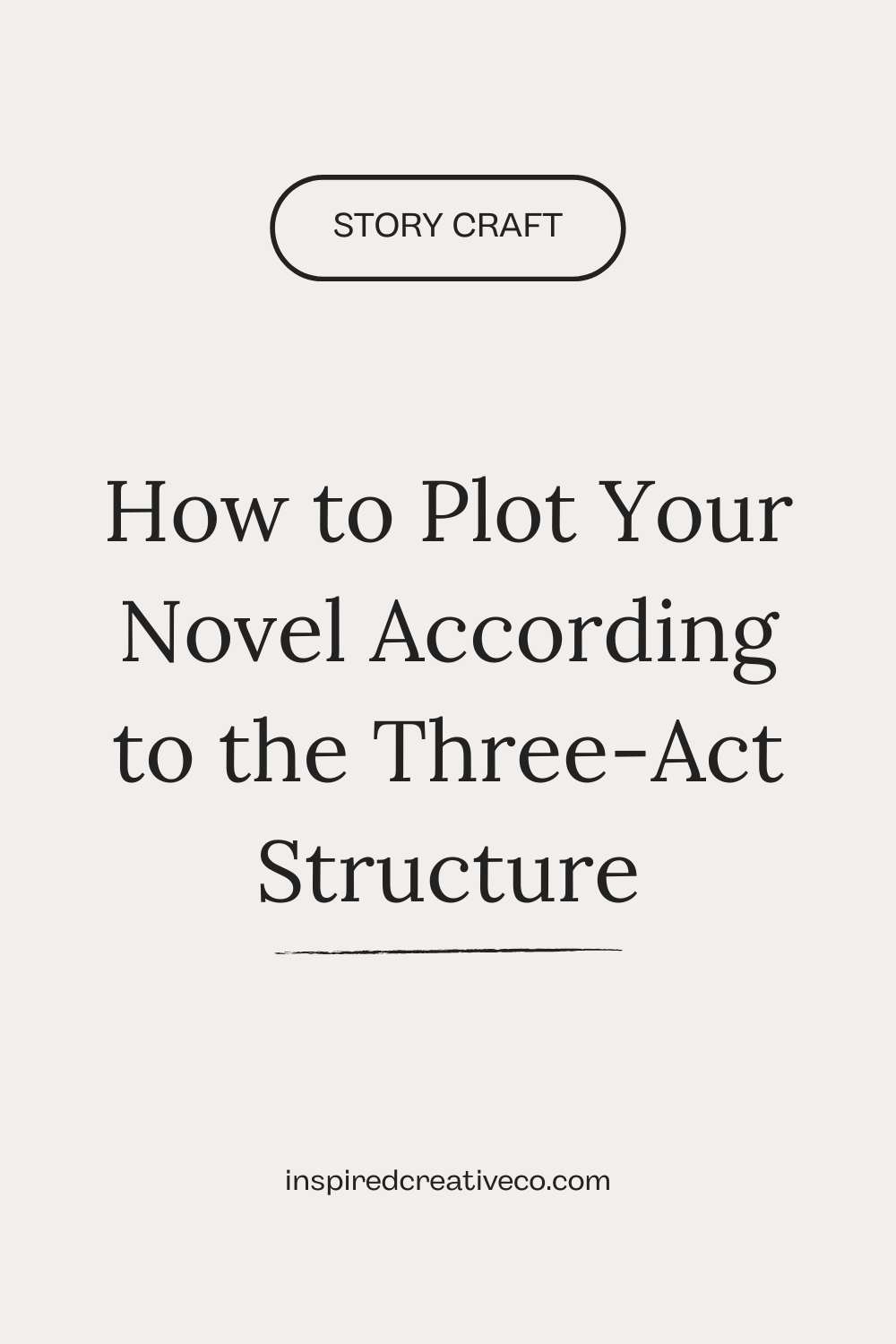How to Plot Your Novel According to the Three-Act Structure
My last blog post focused on how to start drafting your novel. (If you haven’t read it yet, you can find it here.) There are several ways to draft your novel and there are also several difference structures you can use for your plot.
One of the most popular of these is the Three-Act Structure. As the name suggests, the Three-Act Structure is broken into three distinct sections — the beginning, the middle, and the end. By using this framework, you can map out your plot and character arcs and ensure you are hitting all the necessary plot points.
Let’s break it down.
The Three-Act Structure: An Overview
As I said above, this structure is broken into three parts:
Act One, which is equal to about the first 25% of the book
Act Two, which is equal to about the middle 50% of the book
Act Three, which is equal to about the final 25% of the book
These numbers may vary depending on your story, but this is a rough guide for how long each section should be. Here is what your three acts are likely to look like.
ACT ONE
Beginning — the protagonist is introduced, the status quo is established, the world/setting is made clear. The antagonist may also be alluded to.
Inciting Incident — a significant event occurs which kicks into motion the rest of the story and changes the protagonist’s circumstances.
Obstacle — the protagonist faces a significant challenge in their new-found circumstances. The result of this may give them a new goal or motivation.
ACT TWO
Obstacle — the protagonist is thwarted again whilst striving towards their new goal and they begin to have doubts.
Midpoint — a major event or revelation occurs that is directly related to the protagonist’s goal. They have come too far to turn back and now the stakes have been raised.
Obstacle — the protagonist gets closer to achieving their goal, possibly through a minor win or the discovery of important new information.
ACT THREE
Obstacle — the protagonist closes in on the antagonist and is getting closer to their goal. The stakes are higher and tension is mounting.
Climactic Sequence — the protagonist and the antagonist (or antagonistic forces) clash. The protagonist is ultimately victorious.
Resolution— the protagonist has gained what they set out to. They have changed drastically. Now they can return to the ordinary world as a changed person.
A story beat breakdown of Double Jeopardy (1999 film)
Spoilers below
Beginning — Introduce Libby, the main character, her husband Nick and son Matty. Nick takes Libby out on a boat overnight.
Inciting Incident — Libby wakes in the night to find Nick missing and blood everywhere. Libby is found by the coastguard and looks guilty. She is later arrested and sentenced for Nick’s murder.
Obstacle — While in prison, Libby discovers Nick isn't dead. She learns about the double jeopardy law from an inmate. Now she knows she has been set up for murder and must get out, prove her innocence, and get her son back (new goal and motivation).
Obstacle — Libby is released on bail and meets her parole officer and secondary antagonist, Travis Lehman.
Midpoint — Libby is intent on tracking down her son. She misses curfew and is captured by Lehman. She escapes and is on the run and on a mission to find her child.
Obstacle — The lead she found on her friend who is caring for her son turns up nothing — her friend is dead and her son is gone. Through further investigations and evasions, Libby discovers the location of her husband, now living under a new name.
Obstacle — Libby confronts her husband and demands to be reunited with her son. Nick tricks her and tries to kill her.
Climactic sequence — Lehman, who has come to believe that Libby may be innocent, tries to uncover the truth. He finally manages to catch Libby and a plan is formed. When their plan goes awry, Nick is shot and killed.
Resolution — Libby is reunited with her son and she and Lehman become friends.
Delivering on the plot points
Every plot point in your story should build on the overall plot and help or hinder the protagonist in their quest for their goal. Setbacks and successes are needed to develop the tension and raise the stakes for your protagonist.
Questions to consider when contemplating obstacles:
What does my protagonist want most? What would be the biggest spanner in the works that would stop them from achieving that?
What could my protagonist learn that would rock their world and make them doubt their goal, their ability, or who they can trust?
What could my protagonist learn that would help them get a step closer to their goal?
Important takeaways
Whether you’re a plotter or pantser, a stronge understanding of story structure is vital. All genre fiction follows roughly the same structure. No matter how you prefer to plan or draft, it’s important to be able to utilise structure so your book can have the desire impact for the reader.
If you’re eager to strengthen your story structure, my 8-Week Coaching and Critique is just for you! With a mix of editing and coaching, I’ll help you revise your novel through chapter-specific feedback and weekly coaching calls. Learn more about how I can help you strengthen your storytelling here.


